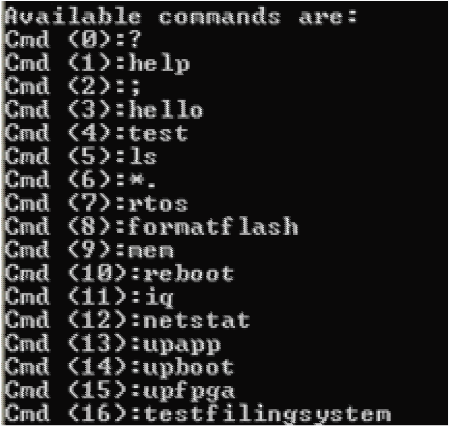What is Telnet?
• Telnet is a command line interface used to execute simple commands in a single BLU device.
• You can use Telnet with all BLU rack devices and controllers except the BLU-8.
• Telnet communicates with the BLU device using its IP address on IP port 23, therefore a device must have a valid IP address and a functioning Ethernet Control port. It doesn't matter if London Architect is running.
• Test the connection using the ping command. (eg: ping 169.254.102.184)
• You cannot telnet a device if it is in Boot Mode or if the device has not booted up successfully.
• For security reasons the Telnet Client is not installed by default on Windows 7 and Windows 8. To install it, navigate to Control Panel/Programs and Features/Turn Windows features on and off/Telnet Client
How is Telnet used?
1. At a command line prompt, type “telnet" command followed by the device's IP address

2. Enter the username “bssaudio"

3. Enter the password “monkey"

You should see confirmation that you are logged in.

You can enter “help" or “?" to see a list of all commands.

Useful Telnet commands
ipconfig
Displays IP address, subnet mask, gateway address and Auto IP status. Useful to get confirmation of IP address information. Useful for changing the IP address of a device. Allows you to change these parameters:
ipconfig setip 10.10.10.10
ipconfig setsubnet 255.0.0.0
ipconfig setgateway 10.10.10.1
ipconfig autoip on
purgexml
This will delete the design file and associated files in the device. After rebooting, the LCD screen will show a Stop sign, indicating that a design file has not been loaded (because you've just deleted it) Useful if the Configuration is problematic, but hardware is ok.
formatflash
This will clear the entire memory except for the boot code and firmware. This is the nearest thing to a “factory reset". Useful to clear everything out in order to rule out any strange hardware behaviour caused by a fault. NO UNDO!
After rebooting the following will occur:
1. The design file and all associated files are deleted
2. The name goes back to default (eg: BLU-80, BLU-32, BLU-160, etc)
3. The IP address settings goes back to default:
• IP Address = 169.254.xxx.xxx
• Subnet Mask = 255.255.0.0
• Gateway = 0.0.0.0
• Auto IP = ON
reboot
Reboots the device. After rebooting, the Telnet session is ended. You must log in again to use Telnet. This is a “soft" reboot and is not quite the same as a “hard" reboot or power cycle. (eg: if the CM-1 has crashed, a soft reboot may not bring it back to life)
netstat
Displays a list of IP ports on which the device is listening and also displays the sockets which are currently open.
ls
Displays a list of the files stored in the Flash memory along with associated file
size.
mem
Displays the total Flash memory size and the amount of unused memory.
delete
Deletes a file in the Flash memory. Some files cannot be deleted.
getname
Displays the device name.
setname
Changes the device name. A reboot is required.
setname Main DSP (spaces and capitals are permitted in the device name)
getnode
Displays the HiQnet node address of the device in hexadecimal format
setnode
Changes the HiQnet node address of the device.
setnode 1234 (node address must be entered in hexadecimal format 0001-FFFF)
history
Displays the CPU usage as a percentage
changeblock
Displays the usage of the changeblock as a percentage
eventlog
Displays the usage of the Event Log as a percentage
getversion
Displays the application version
openport
Opens the telnet, ftp, raw message or http IP ports. Also displays current status of these ports.
openport telnet
openport ftp
openport raw
openport http
Note: These ports can also be turned on through the serial port by using the London Configurator application.
closeport
Closes the telnet, ftp, raw message or http IP ports. Functionality will stop. Also displays current status of these ports.
closeport telnet
closeport ftp
closeport raw
closeport http
Note: These ports can also be turned off
through the serial port by using the London Configurator application.
recall
Recalls a Venue Preset expressed as ID number.
recall 3
All other commands are used for internal development purposes and should not be used unless directed to by a BSS Audio Technical Customer Support Agent.